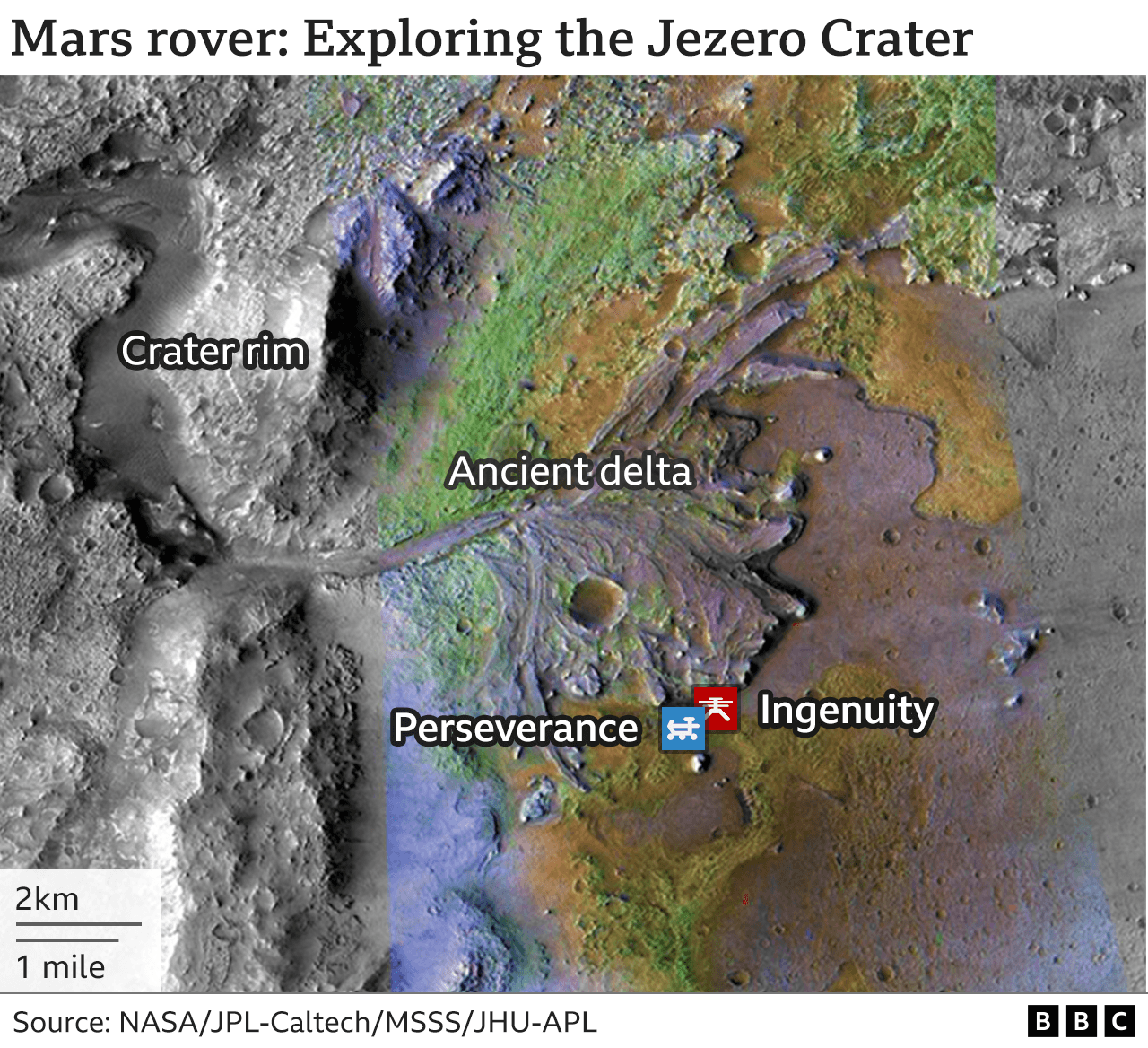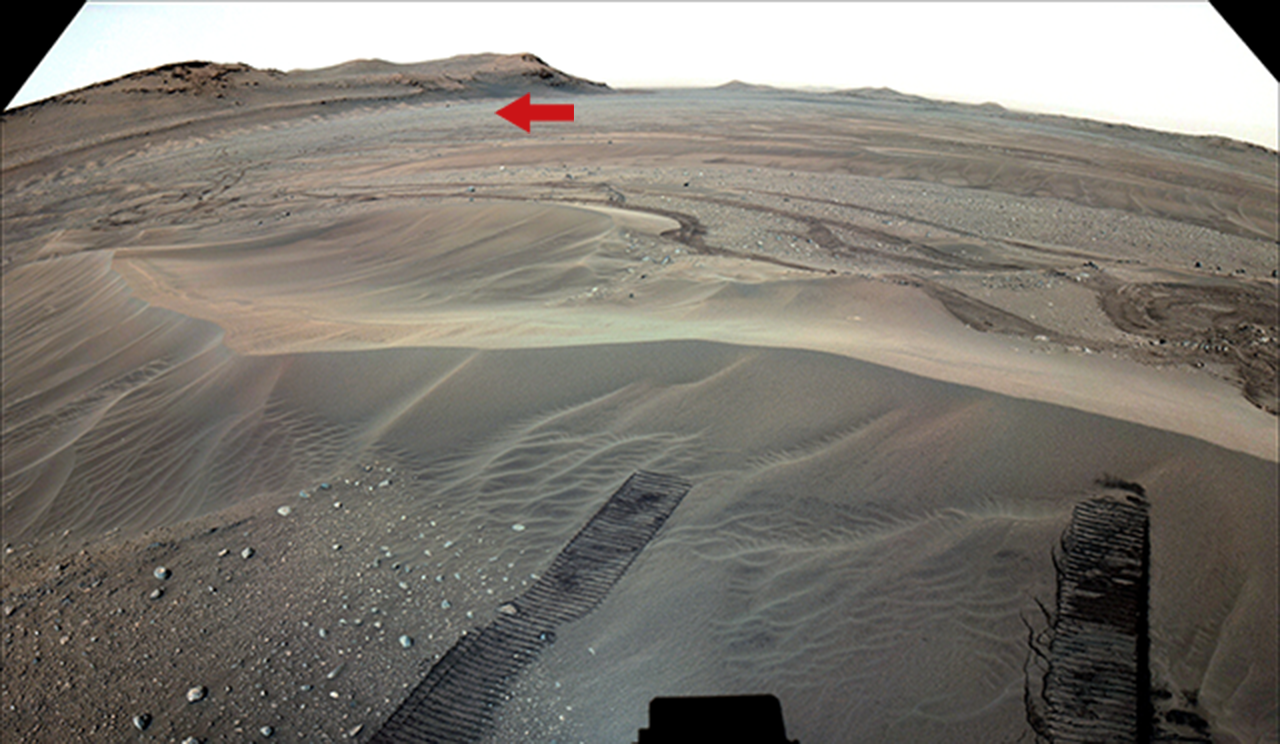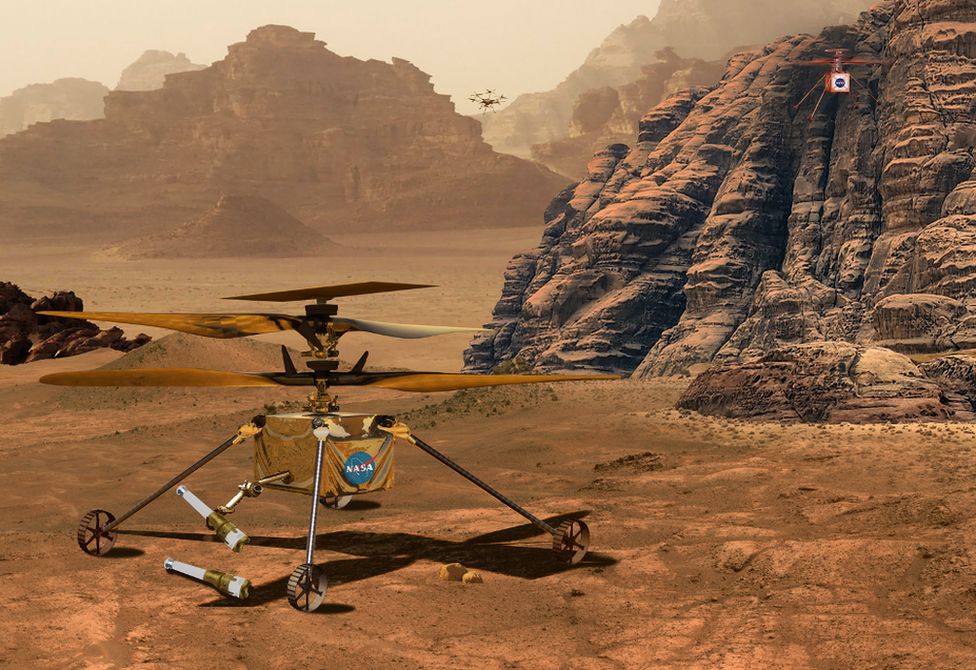
The American space agency's Mars rover Perseverance will this week begin dropping samples of rock on to the surface of the Red Planet.
The materials have been packaged in small titanium tubes with the expectation they can be picked up by a future mission and brought home.
It's a major milestone in the quest to find out whether there is life on Mars.
It's thought only by studying rock and soil samples in Earth laboratories can the matter be resolved.
Perseverance will place 10 cylinders on the ground at its exploration site in Jezero Crater.
They contain a mix of volcanic and sedimentary rocks that the robot has drilled over the past 15 months.
There'll also be examples of Martian soil and air.
The first finger-sized tube should be in position on Tuesday or Wednesday.

The location for the drop is a flat piece of terrain that's been nicknamed "Three Forks".
"The surface is like a pool table - really boring," observed Nasa's chief Mars scientist, Mike Meyer.
This will make it easier for a future mission to land and recover the store.
To be clear, the collection being laid down over the next few weeks will not form the primary return cache; it's more of a "Plan B".
Perseverance will retain copies of the samples with the hope it can directly deliver them - and others yet to be drilled - to the mission that comes to take them home. But Nasa can't risk the scenario where the rover breaks down with all the rocks stuck inside it.

The Three Forks depot is critical, therefore, "because it guarantees that a scientifically high-value sample collection will be available for Earth return in case Perseverance is unable to deliver for any reason," explained mission scientist Meenakshi Wadhwa from Arizona State University.
"It builds robustness into our Mars sample return plans," she told reporters.
If the nightmare happens and Perseverance dies, the fetch mission will be directed straight to Three Forks.
It will have two drones equipped with claws to grab the tubes and take them to the rocket system that will then blast them off Mars for the journey home.
This video can not be played
To play this video you need to enable JavaScript in your browser.
Scientists believe the depot samples offer a good range of analytical opportunities.
The volcanic rocks will tell them about the age of Jezero Crater and the broader geological history of Mars.
The sedimentary rocks are the ones that will have the greatest interest in trying to identify traces of ancient biology.
Perseverance drilled these from the remnant delta deposits in Jezero.
A delta is a structure built up from the silt and sand dumped by a river as it slows on entry into a wider body of water.
It's the kind of feature that might just have trapped evidence of past microbial organisms.

Lori Glaze, the director of planetary science at Nasa, said the life question could only be addressed using the sophisticated techniques that were available on Earth.
"We can do a lot in situ with our remote-sensing instruments but we can't take all of our laboratory equipment and all of our human expertise to the surface of Mars. So we bring the samples back here, and then we can not only use all of our state of the art equipment but we'll have those samples for decades and we can come up with new ideas [to test the samples that] we haven't even dreamed of yet," she told BBC News.
It will take just over a month to lay down the store. The tubes will be placed about 6m apart from each other in a zig-zag pattern. Their exact positions will then be photographed and catalogued.

Once this task is complete, Perseverance and its scout helicopter, Ingenuity, will climb up on to the top of the delta to start the next phase of their mission.
The rover still has more than 20 unused sample tubes on board, ready to be filled with other interesting rocks.
A sample-retrieval mission comprising a landing platform, helicopters, a robotic arm and a return rocket is likely to leave Earth for Mars in mid-2028, with a roughly two-year cruise time.
The sample tubes it acquires - either from the Three Forks store or directly from Perseverance at another location - would arrive back on Earth in 2033.
The project is a joint venture with the European Space Agency. The plan was discussed at last week's American Geophysical Union Fall Meeting.
https://news.google.com/__i/rss/rd/articles/CBMiNWh0dHBzOi8vd3d3LmJiYy5jb20vbmV3cy9zY2llbmNlLWVudmlyb25tZW50LTY0MDA2Mzc30gE5aHR0cHM6Ly93d3cuYmJjLmNvbS9uZXdzL3NjaWVuY2UtZW52aXJvbm1lbnQtNjQwMDYzNzcuYW1w?oc=5
2022-12-20 04:45:51Z
CBMiNWh0dHBzOi8vd3d3LmJiYy5jb20vbmV3cy9zY2llbmNlLWVudmlyb25tZW50LTY0MDA2Mzc30gE5aHR0cHM6Ly93d3cuYmJjLmNvbS9uZXdzL3NjaWVuY2UtZW52aXJvbm1lbnQtNjQwMDYzNzcuYW1w

Tidak ada komentar:
Posting Komentar